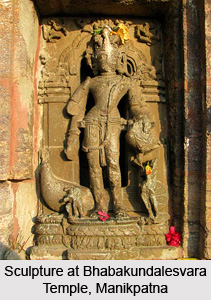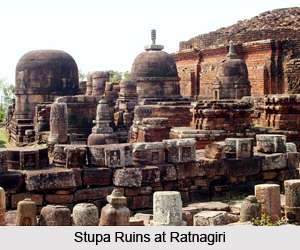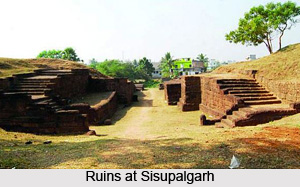 Archaeological sites in Odisha have furnished artefacts belonging to different eras of Indian history. The place has been the witness of different civilizations that have flourished over time and have left their cultural relics. Orissa houses a number of ancient Buddhist centres, which are presently in ruins. The remains of Stupas and Viharas exhibit exquisite architecture. Excavations of these sites have also furnished old inscriptions that elucidate various events of Indian history.
Archaeological sites in Odisha have furnished artefacts belonging to different eras of Indian history. The place has been the witness of different civilizations that have flourished over time and have left their cultural relics. Orissa houses a number of ancient Buddhist centres, which are presently in ruins. The remains of Stupas and Viharas exhibit exquisite architecture. Excavations of these sites have also furnished old inscriptions that elucidate various events of Indian history.
Asurgarh
Asurgarh, also known as the fort of Asura, was one of the most ancient metropolises situated in Kalahandi district, associated with 500 BC to 500 AD. Excavations in this region have furnished artefacts belonging to pre-historic Stone Age and Copper-Bronze Age. It has been estimated that about 2000 years ago Asurgarh was inhabited by an urbanized and cultured civilization. The place is roughly rectangular with four gates on the huge wall that surrounds the area. A large water reservoir has also been found which was known as Asursagar. Asurgarh had been the political, commercial and cultural hub of Atavikas and Taitilaka Janapada.
 Dhauli
Dhauli is a hill with a large open space besides it which is situated on the banks of the river Daya, near Bhubaneswar. Rock engravings have been found here exhibiting major edicts of Ashoka. The place is also believed to be the site of Kalinga War. It also houses the earliest Buddhist sculpture of Odisha in the form of rock-cut elephant above the edicts. With the initiatives of Ashoka, Dhauli became an important Buddhist centre and the emperor established various Stupas, Chaityas and pillars. The place also hosts an ancient Shiva temple.
Dhauli
Dhauli is a hill with a large open space besides it which is situated on the banks of the river Daya, near Bhubaneswar. Rock engravings have been found here exhibiting major edicts of Ashoka. The place is also believed to be the site of Kalinga War. It also houses the earliest Buddhist sculpture of Odisha in the form of rock-cut elephant above the edicts. With the initiatives of Ashoka, Dhauli became an important Buddhist centre and the emperor established various Stupas, Chaityas and pillars. The place also hosts an ancient Shiva temple.
Golabai Sasan
Golabai Sasan, is situated in Khordha district, is a village known for its medieval temple architecture. Artefacts belonging to Iron Age and Chalcolithic age have been excavated here which dates back to 2nd and 1st millennia BCE. Grey and dull red pottery and wares have been found here.
Manikpatna
Manikpatna is another significant archaeological site situated on the left bank of the Kushabhadra River. Chinese pilgrim Hiuen Tsang had described the place as the medieval port of Chelitalo. Evidences of trade relations with other countries have been found here. Excavations have recovered pottery, fragments of amphora and knobbed wares. It also houses Bhabakundalesvara temple which has a black chlorite stone Shiva Linga as its presiding deity.
Ratnagiri
 Ratnagiri, located in Jajpur district, is an important archaeological centre where ruins of a beautiful Stupa have been found. It is found surrounded by numerous votive Stupas. This Buddhist establishment dates back to 5th century CE. The place had witnessed the growth of architecture and religion till the 13th century CE. Certain bronze, brass and stone sculptures have also been discovered from Ratnagiri. The place was established during the reign of Gupta king Narasimha Baladitya.
Ratnagiri, located in Jajpur district, is an important archaeological centre where ruins of a beautiful Stupa have been found. It is found surrounded by numerous votive Stupas. This Buddhist establishment dates back to 5th century CE. The place had witnessed the growth of architecture and religion till the 13th century CE. Certain bronze, brass and stone sculptures have also been discovered from Ratnagiri. The place was established during the reign of Gupta king Narasimha Baladitya.
Sankarjang
Sankarjang, located in Angul district, is an archaeological site of ancient cemetery and settlement. The place was found as a chance discovery in which axes of basalt, lithic bars, metallic artefacts and human skeletal remains were excavated which probably belong Neolithic period.
Sisupalgarh
Sisupalgarh, situated in Khordha district, is amongst the largest and best preserved fortifications of India. It is a nationally protected monument. Artefacts discovered in this place have established the fact that this fort city blossomed between 3rd century BC and 4th century AD.
Udayagiri
Udayagiri is an important archaeological site housing major Stupas and monasteries, making it an important Buddhist centre of ancient times.



















